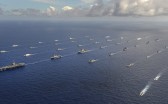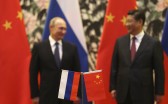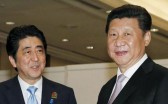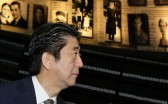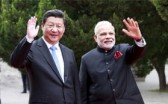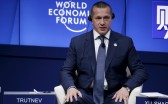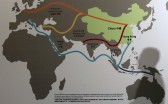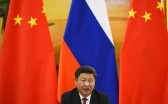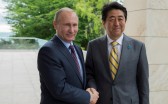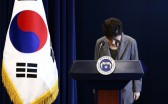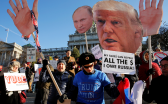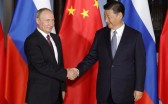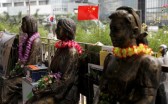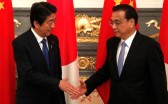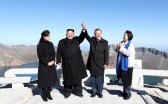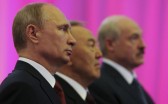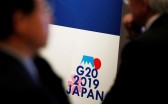The long-awaited December 15-16 Yamaguchi-Tokyo summit appears to have been a failure, which masqueraded as a step forward. That is the conclusion many sources in Japan have drawn, and the most reasonable finding unless one deduces from the remarks of Abe Shinzo and Vladimir Putin that in their 95-minute tete-a-tete with only interpreters present a confidential agenda was planned capable of producing a very different outcome: a peace treaty, the transfer of two islands to Japan, a geo-economic breakthrough centered on energy, and, even, perhaps, a tacit geopolitical understanding with transformative significance for Northeast Asia. I cannot rule out the possibility that Abe and Putin, each driven by a long-term strategic vision, have found a range of common aspirations, but, in light of repeated excessive speculation in Japanese media, it is prudent to stick to what is actually confirmed. Not only were expectations (heightened in Abe’s May visit to Sochi and then in his September visit to Vladivostok) not realized, the customary diplomatic playbook has been tossed aside with only feint hints of a replacement. Perhaps, those who see major progress are relying on signals of the leaders’ moods, but such signals have been misleading so often over repeated summits, that we had better concentrate on actual evidence.
The Summit and Its Aftermath
At Yamaguchi, Abe and Putin met for the fourth time in seven months, engaging in one more tete-a-tete. Yet, Putin’s roughly three-hour arrival delay and their failure to issue a declaration testified to the meagerness of the outcome. The promise by Putin to seek a “hikiwake” solution to the dispute that has for sixty years stood in the way of a peace treaty rang hollow. The fanfare evoked by Abe after his September stop at the Eastern Economic Forum, fell on flat ears. Big economic plans spurred by Abe’s 8-point initiative barely moved forward in the Tokyo phase of the exchange, even if Japan pledged some money, and a feasibility study reportedly will go forward on a Sakhalin-Hokkaido gas pipeline. Trying to put a gloss on the summit, the two leaders spoke of future efforts to overcome rival sovereignty claims by crafting a “special system” for joint economic activity on what Japanese call the “Northern Territories,” but media reports had more to say about why these claims make such an endeavor difficult than about the actual prospects to reach this objective, which they failed to do prior to the summit. Four years after Abe returned as prime minister with a clear priority to reach a breakthrough, capitalizing on Putin’s “hikiwake” proposal, the momentum in relations has slowed, a message neither leader was eager to convey.
What lies ahead for Abe and Putin as each contemplates many more years in his post? Japanese boosters speculate about better timing: first Trump would clear the way by leading in the removal of G7 sanctions against Russia as his personal bond with Putin drives a global, geopolitical reordering; then Putin would win reelection and have more room to maneuver. The problem with this logic is that explanations for why a deal was within reach in 2016 centered on Putin crediting Abe with being willing to defy US pressure and needing Japan’s economic help given the sanctions and low energy prices. Also, they stressed Japan’s importance as the one alternative to Russia’s overdependence on China. If Trump offers a better alternative, the value of warm “Vladimir-Shinzo” relations becomes problematic. Yet, an alternative view is that Russo-US rapprochement is just the right context for Abe’s wooing of Putin. For the time being the context is not right for Putin, and he has delayed any deal.
Putin will continue to seek large-scale Japanese investment in the Russian Far East with one goal being an “energy bridge” bringing cheaper Russian electricity as well as more gas and oil to Japan’s market. Yet, despite protestations that economics, not politics, reign, Japanese media condition any big projects on a territorial agreement. Abe will persist in seeking a way to resolve in “this generation” the territorial quest his country and the families of displaced island residents have long sought, but even a shift from “4-islands in a batch” to “2 + alpha,” with a minuscule alpha—seemingly in line with what Putin had been close to conceding earlier—appears to have little prospect of success now. Russia’s position has hardened despite Japan’s position softening. Putin now seems to be including geopolitical preconditions and national identity rigidity not previously anticipated by Japanese who thought a deal would be possible. Japan now must agree on Russia’s historical interpretation that as victor in WWII it is entitled to sovereignty over all four islands before a possible transfer of two islands could occur in accord with the 1956 bilateral agreement. Moreover, the idea of Japan sticking closely to the US side in what many in Russia have been calling a “new cold war” is being cited as a barrier, which few in Japan are inclined to cross.
Over the next few years, we can anticipate that relations will remain warm between Abe and Putin as both keep their options open as they await the outcome of more momentous interactions between Trump and Putin as well as Trump and Xi Jinping. The unacknowledged reality is that Japan is now a secondary player in great power maneuvering. It remains to be seen if Russia also—given dependence on China—has only a secondary role. If the Sino-US relationship is increasingly conflictual under Trump—whether because of Taiwan, the South China Sea, North Korea, or a trade war—, will Trump and Putin find a way to reset relations? With Trump intent on a tougher posture toward Iran and now calling for “safe zones” in Syria, he and Putin may find that they have less common ground than their warm words to each other suggest. US demonization of Putin has intensified over the hacking directed at the election of Trump, which contributes to pressure against Trump wooing Putin. Xi will undoubtedly offer “carrots” with possible warnings of “sticks” to Putin to avert any sharp shift in course. Japan is too concerned about the threat from China to oppose Trump in dealings with Xi and too inconsequential to have much impact on what Trump does with Putin. Abe will, most likely, care more about coordinating closely with Trump, while waiting on the sidelines before he rekindles ties to Putin. Yet, he may be able to ride Trump’s coattails in a second stage of pursuing Putin.
The Japanese Media Failure
Japanese media coverage of the run-up to the December summit was informative on Japan’s aspirations as they evolved, finishing in the days before the summit with the warning not to expect much. Yet, it was wildly misleading in covering the broader environment and Russian thinking. This was not a sign of group thinking across the board since both on the right (e.g., Sankei) and on the left (e.g., Tokyo Shimbun) there were doubts about the wisdom of Abe’s concessions as his pursuit of Putin went forward. Critics tended to narrowness too, either because they started from the assumption that Japan’s just territorial claims preclude a compromise that could achieve a deal or that the geopolitical stakes were so centered on China that other concerns merited little attention. Given previous hyperbolic expectations of a deal with Russia that failed to grasp basic realities, the disturbing conclusion is that the quality of analysis falls far short of what is needed to shape an informed, flexible, and pragmatic foreign policy. Parroting the views of government officials intent on steering public opinion in a particular direction is too pervasive. Neglecting to probe with far-reaching questions is a persistent shortcoming. Sticking to assumptions in support of a particular worldview on the left or the right happens too often. Looking back for lessons about why expectations were raised excessively is rarely done. Only by carefully following the Japanese media could one learn how talks between the two sides were being framed, but at the price of losing sight of the geopolitical and geo-economic contexts as well as of the national identity considerations at stake.
Rather than learn the lessons of a disappointing summit, some in Japan are doubling down on the illusion that Russia is poised to join Japan and the United States in ties to limit China. The December 17 Yukan Fuji article on the summit singled out plans to resume 2+2 dialogue with Russia—only one exchange was held in late-2013—as a sign of such a strategic understanding. Terebi Asahi on December 17 conveyed a narrative that Russian media view this summit as an historical breakthrough, as if Japan has decided to put aside the territorial issue and go forward with economic ties, again uncritically reporting a conclusion with no substantive analysis for how this impacts future bilateral relations. Other reports acknowledged that Abe had raised expectations too high, but they failed to address the media’s responsibility for illusions or the implications of a seemingly inconsequential summit after the hype. Given frequent hyperbole, it is hard to rely on the media in making predictions.
Lessons for the Trump-Putin-Abe Triangle from the Abe-Putin Summit in Japan
Abe highly values a proactive foreign policy. This is seen in his diplomacy targeted at Southeast Asia, Australia, India, North Korea, and Russia as well as his tightening alliance ties with the United States. His December 28, 2015 deal with South Korea showed that he could change course under new conditions. With few options for a proactive approach, working closely with Trump seems to be his likely choice. He can expect less pressure against revisionist moves such as visits to the Yasukuni Shrine. More space may open for overtures to Taiwan, additions to Japan’s defense budget, and broader interpretations of collective security. Pressuring North Korea through secondary sanctions and South Korea through insistence on trilateralism (including missile defenses) would, presumably, complement Trump’s agenda. It is doubtful that such actions would be welcome by Putin. Abe’s room for maneuver abroad would be constrained by the deepening polarization. Recovery of territory from Russia has been described as part of a strategy to boost his support, call early elections, and increase chances for constitutional revision. Without a breakthrough with Putin, Abe may find another foreign policy approach conducive to his overall objectives. Trump’s unpredictability, with no record of following expert advise on foreign policy, makes planning how to work with him very challenging. Abe has little choice but to press for stronger alliance ties while he sees how Trump interacts with Xi and Putin during the first months of his presidency. The December summit might best be described as a holding operation in preparation for new diplomatic shifts.
Trump should draw lessons from Abe’s unsuccessful pursuit of Putin to date. Warm words or energetic exploration of economic deals do not guarantee a breakthrough on matters that affect Putin’s compulsive thinking about national interests and national identity. The Russo-Japanese gap on East Asian security issues and return of two islands to Japan appeared to be surmountable, as the economic lubricant to facilitate a deal looked quite compelling. There is reason to doubt that Russian-US relations have as strong a foundation for gains despite common opposition to ISIS. US media analysis is bound to be far more skeptical of geopolitical prospects and Putin’s real intentions. In these circumstances, Putin may find it convenient to turn again to Abe as an alternative to Trump or as a way to elicit Abe’s help with Trump.
Conclusions
The courtship has not ended; so we should be cautious in drawing lessons from it. Lingering hopes for Russia rest on the following assumptions: 1) if expectations far exceeded results, that is no reason to question an ongoing process that has promise with support for Abe’s cabinet rising and 54 percent of respondents approving of the joint economic development (All Nippon News, December 19); 2) what really matters is building trust, and all reports suggest that this is continuing (The Yomiuri Shimbun, December 17); Japan can wait for Russia finally to recognize that China has become its strategic threat too (Yomiuri Shimbun online, December 22); 3) regardless of a territorial deal, Hokkaido would be the beneficiary of an energy pipeline, turning around its depressed economy (JB Press, December 23); 4) Abe and Putin have a secret agreement for Abe to meet with Putin in Russia twice in 2017 and joint economic development of the islands to lead to the transfer of two after Putin’s expected 2018 reelection (Gendai Business, December 24); and 5) the main success of the summit was a strategic understanding on how the two countries will work and develop together (Sankei, December 20). Amid skepticism in much of the press, Japanese sources find reasons for hope, as do Russian sources overwhelmingly in support of the summit results but rarely suggesting outcomes similar to the above.
Japanese, South Koreans, and Southeast Asians have tried in various ways to avert the increasing polarization in East Asia. The usual pattern is to exaggerate the clout of Japan as a great power, South Korea as a middle power, or ASEAN as the central force in the region. Lack of appreciation for the limits of their diplomatic influence is a source of overconfidence in what can be accomplished. While Japanese awakened to the point of recognizing that their country was unable to budge Russia away from China to any degree and that when the US side beckoned Russia turned its attention away from Japan, analysis keeps falling short of pinpointing the limits of diplomacy by a power with a slight military impact and reduced economic leverage compared to the late 20th century. An assertive, unilateral Trump will only add to the reality of Japan’s weak position versus China, limited ability to influence Russia and North Korea, and woeful misreading of its need for South Korea as a close partner in Asia.
Abe’s interest in finding more partners to limit China’s hegemonic ambitions is now a stronger driving force for his pursuit of Russia than the recovery of two islands, I would conclude. This makes compromises on the number of islands and the means of joint economic development easier. It also means that Russian moves that once would have been seen as setbacks, such as positioning anti-missile weapons there just days after the summit, elicit barely a shrug. Abe is likely to continue pursuing Putin, perhaps trying to urge Trump to do so more earnestly as well. Given the key geopolitical thrust of Abe’s interests, a Trump-Abe coalition is predictable.
The big stumbling block for Abe is Putin’s geopolitical thinking, national identity obsessions, and economic interests—all of which, so far, lead Russia to China and make a Trump-Putin breakthrough unlikely. Japanese media have been hesitant to delve deeply into the analysis of forces behind close Sino-Russian relations and the deterioration of Russo-US relations. This gives rise to wishful thinking. Polarization of Sino-US relations, which Trump is inclined to accelerate, would alter the context for both Putin and Abe. This puts a premium on the kind of deep analysis that many in Japan have been avoiding amid a drumbeat of alternating hopes and frustrations.
How Japan-Russia relations unfold bears on the anticipated overtures by Donald Trump to Vladimir Putin. It also reflects on Abe’s extended diplomacy in response to palpable alarm about China. Finally, the lessons of this recent diplomacy are salient for attempts to avert sharp geostrategic polarization in East Asia, where some view Russia as a swing state that could fortify strong ties to China or diversify its strategic relations. The summit results in December are not conclusive, but they suggest that Putin is unlikely to be persuaded that Abe or Trump has an offer too good to refuse.
